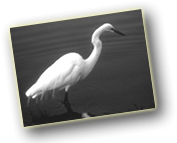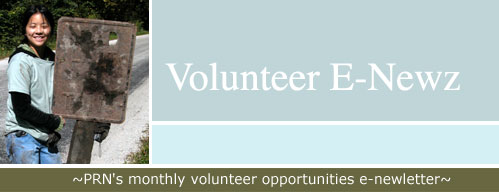|  The word BioBlitz an amalgam of the two words Bio and Blitz. Bio, comes from the Greek word bios, which means life. Blitz is the German word for lightning. Put the two words together, and you have an event where many people work together to find the bios [the life of an area] in a blitz (a short period of time- usually 24 hours in this case). The word BioBlitz an amalgam of the two words Bio and Blitz. Bio, comes from the Greek word bios, which means life. Blitz is the German word for lightning. Put the two words together, and you have an event where many people work together to find the bios [the life of an area] in a blitz (a short period of time- usually 24 hours in this case).
Why hold a BioBlitz?
Bioblitzes only offer a snapshot of the organisms present in an area at any given time. However, they are a creative and hands-on way to educate the general public about the wealth of biodiversity that can be found in their region. These events allow the public an opportunity to work side by side with scientists and get up close and personal with plants and animals that might otherwise go unnoticed. Most important, bioblitzes are fun and informative for all ages. Where else can a child help to catch an animal, and then learn from experts how to identify it?
What types of events/activities are common in a BioBlitz??
The typical BioBlitz features data collection (or events) in the following areas:
- Bird Surveys: Have a featured time for bird walks, bird counts as well as bird netting, and tagging. This gives people the chance to learn a lot about birds from experienced birders and ornithologists. Few people rarely have the opportunity to see birds up close.
- Amphibian and Reptile Surveys: Collect, count and catalogue, salamanders, turtles, frogs, toads and snakes.
- Fish Community Surveys: Have an experienced biologist electroshock fish for species identification. The fish can be transported to shore in a bucket where volunteers can aide in the identification and species counts.
- Aquatic Macroinvertebrate Community Surveys (Small insects and organisms you can see with your naked eye): Volunteers can sample and identify aquatic macroinvertebrates with professionals. Much of the diversity you will find will be invertebrates. The more trained professionals you have to assist in the identification of specimens the higher your overall BioBlitz species count will be.
- Terrestrial Insect Community Surveys (land): Volunteers can net, collect and identify insects with professional entomologists. Again, more invertebrates! You will want as many pros as possible to assist volunteers in the identification.
- Tree and Plant Species Diversity: Take a walk in the woods with foresters or ecologists. Identify and record the different species of trees, measure their diameter at breast height (DBH) and note their ecological significance to the area.
- Water Quality Testing (pH, DO, Temperature, Turbidity, etc.): This is a great way to help people understand these often-daunting aspects of the quality of the water in their local stream. You could also use the professionals to demonstrate and promote methods of water quality monitoring that volunteers can do on their own in their favorite stream.
- Bat Trapping: Learn about these vital species. A great nighttime event for kids of all ages. Bats are cool, mysterious, surrounded by myth and folklore, and are vital parts of an ecosystem.
- Owl Prowls: Another great nighttime event. Have an ornithologist lead walks in search for owls, perform species counts, and trap & release if possible.
- Mammal Trappings: Have mammalogists set up live traps for small mammals. This will assist in the quest for these often quick and elusive animals.
Now what? How do I start planning my BioBlitz?
Prairie Rivers Network would like to help groups around the state who would like initiate bioblitzes in the coming year. They do take time to plan and to publicize, so thinking about hosting one in your area is not too early. If having a bioblitz sounds like a great activity for your community, and you’d like information, feel free to contact us. We are here to assist watershed groups throughout IL to have bioblitzes in their neighborhoods. Contact Kim Erndt, Watershed Organizer at Prairie Rivers if you are interested. 217-344-2371.
|

 The word BioBlitz an amalgam of the two words Bio and Blitz. Bio, comes from the Greek word bios, which means life. Blitz is the German word for lightning. Put the two words together, and you have an event where many people work together to find the bios [the life of an area] in a blitz (a short period of time- usually 24 hours in this case).
The word BioBlitz an amalgam of the two words Bio and Blitz. Bio, comes from the Greek word bios, which means life. Blitz is the German word for lightning. Put the two words together, and you have an event where many people work together to find the bios [the life of an area] in a blitz (a short period of time- usually 24 hours in this case).